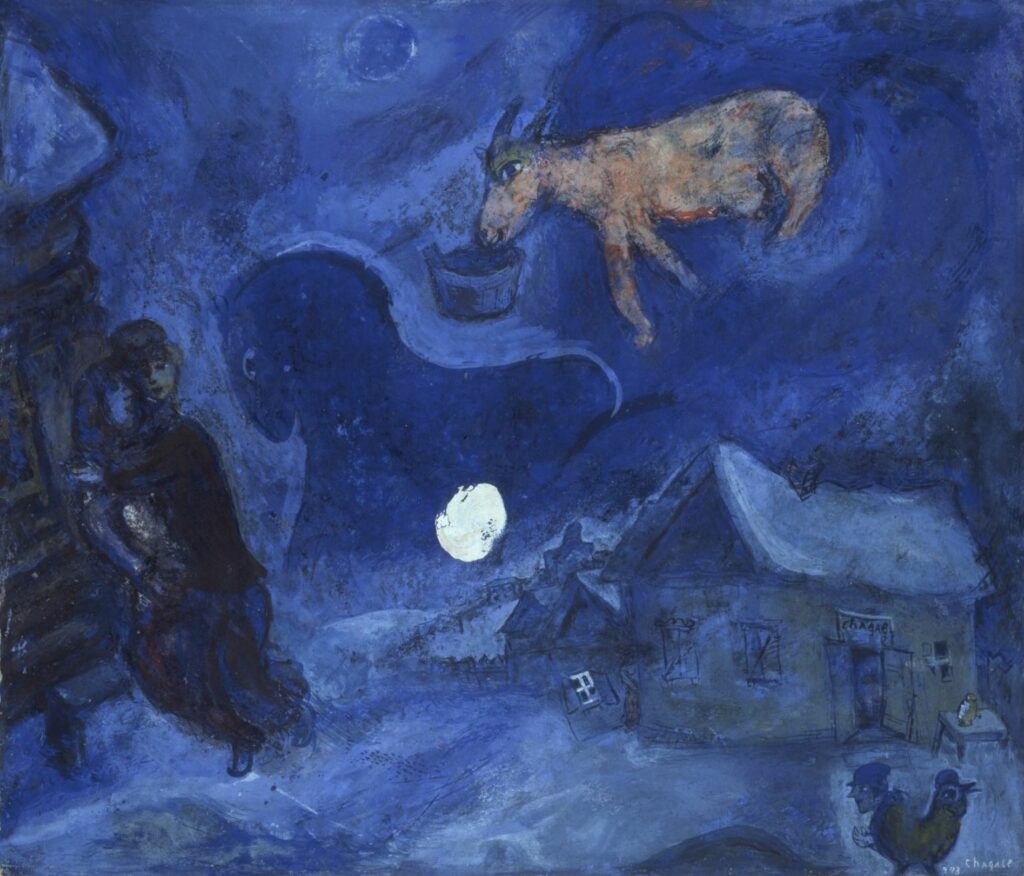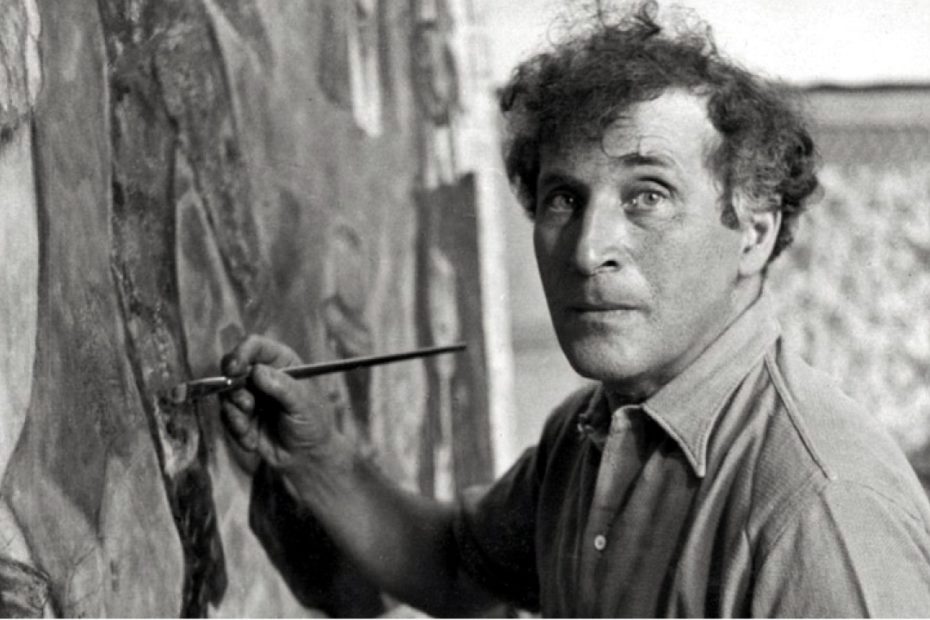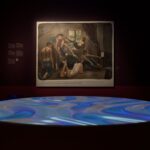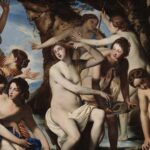Dans mon pays. is a painting maby by the Russian painter – naturalized french – Marc Chagall. Nowadays it belongs to Galleria d’Arte Moderna di Torino collections.
Chagall’s other pieces are in museums all around the world , both in Italy both abroad.
Another painting, relevant inside his artistic production, is “La Pioggia” ( The rain ) now at Guggenheim Musuem inVenice.
If you are also interested in learning more about this masterpiece, we recommend: La pioggia by Marc Chagall at Guggenheim in Venice .
Want to know more about Dans mon pays?
Who was Chagall
Chagall was born on 7 July 1887 in Belarus.
After spending a period of his life in St. Petersburg, he moved to Paris which would become his adopted city and a fundamental place for the development of his art.
Years later, referring to the French capital, he would say: “just like a plant needs water, so my art needed Paris”.
An artwork in exile
Dans mon pays was realized during Chagall and his family exile in the United States due to the increasingly insistent Nazi-fascist persecutions in Europe which forced many artists to move overseas.
Chagall arrives in the States in 1941 invited by theMuseum of Modern Art in New York, in America he meets many fellow artists who escaped the war such as Mondrian or André Breton.
He immediately began exhibiting artworks in American galleries and museums, as well as creating sets for ballets with the music of the most famous Russian composers, Tchaikovsky and Stravinsky.
Dans mon pays
The themes that Chagall proposes in his artistic career are also found in Dans mon pays.
He, who has always been connected to his native land and its landscapes, recalls its image thanks to a Russian village covered in snow and wrapped in a delicate nocturnal atmosphere in shades of blue and light blue, which highlight its suspension in space and time..

At the center of the picture stands out the full moon, which envelops every element of the painting in a dreamlike atmosphere.
In Chagall’s blue sky there is a cow in flight, the blue shape of a mysterious horse and the bizarre hen with the head of a man.
Likewise in many other paintings, Chagall portrays himself suspended from the ground embraced by his wife, Bella.
In some ways the artwork is similar to another performed in 1944, entitled “The green eye”, in which, however, a large disturbing and surreal eye stands out and dominates the scene.














